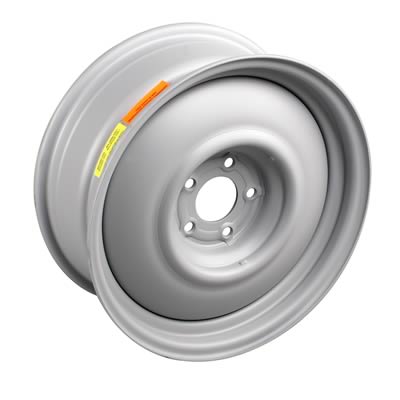Wheel Vintiques 07 HHR Series Smoothie Wheels 076621105 Free
20 Inch Steel Smoothie Wheels - A wheel can be described as circular ingredient that is intended to rotate in an axle bearing. The wheel is one of many reasons elements of the wheel and axle which are probably the six simple machines. Wheels, side by side with axles, allow heavy objects to become moved easily facilitating movement or transportation while supporting a load, or performing labor in machines. Wheels are used in other purposes, perhaps ship's wheel, wheel, potter's wheel and flywheel.Common examples are merely in transport applications. A wheel greatly reduces friction by facilitating motion by rolling together with the aid of axles. To enable wheels to rotate, a flash really ought to be applied to the wheel about its axis, either in terms of gravity or by the application of another external force or torque.The English word wheel is produced by the Old English word hweol, hweogol, from Proto-Germanic *hwehwlan, *hwegwlan, from Proto-Indo-European *kwekwlo-, a lengthy style of the foundation *kwel- "to revolve, navigate ".Cognates within Indo-European include Icelandic hjól "wheel, tyre", Greek κύκλος kúklos, and Sanskrit chakra, the latter both meaning "circle" or "wheel ".Precursors of wheels, identified as "tournettes" or "slow wheels", were known within the Middle East through the 5th millennium BCE (one of the first examples was discovered at Tepe Pardis, Iran, and dated to 5200–4700 BCE). These people were made of stone or clay and secured down by having a peg on the center, but required effort to turn. True (freely-spinning) potter's wheels were apparently being listened to in Mesopotamia by 3500 BCE even as soon as 4000 BCE, plus the oldest surviving example, which was associated with Ur (modern day Iraq), dates to approximately 3100 BCE.
The best proof wheeled vehicles appears around the lover on the 4th millennium BCE, near-simultaneously in Mesopotamia (Sumerian civilization), the Northern Caucasus (Maykop culture) and Central Europe (Cucuteni-Trypillian culture), in order that the question that culture originally invented the wheeled vehicle holds unsolved.The initial well-dated depiction on the wheeled vehicle (here a wagon — four wheels, two axles) is at the Bronocice pot, a c. 3500 – 3350 BCE clay pot excavated during a Funnelbeaker culture settlement in southern Poland.The oldest securely dated real wheel-axle combination, that from Stare Gmajne near Ljubljana in Slovenia (Ljubljana Marshes Wooden Wheel) is already dated in 2σ-limits to 3340–3030 BCE, the axle to 3360–3045 BCE.2 types of early Neolithic European wheel and axle are known; a circumalpine model of wagon construction (the wheel and axle rotate together, like Ljubljana Marshes Wheel), and also in the Baden culture in Hungary (axle doesn't necessarily rotate). They both are dated to c. 3200–3000 BCE.In China, the wheel was certainly present along with the adoption of your chariot in c. 1200 BCE,although Barbieri-Low[9] argues for earlier Chinese wheeled vehicles, c. 2000 BC.
Related Images with Wheel Vintiques 07 HHR Series Smoothie Wheels 076621105 Free
Bagged and body dropped 83 wagoneer build Page 4 JeepForum.com
+Wheels 20 inch smoothie wheels Quotes Smoothie Wheels com steel
theWheelsmith Smoothie Wheels and Accessories
20quot; Steel Wheels eBay
| TITLE: | Wheel Vintiques 07 HHR Series Smoothie Wheels 076621105 Free |
| IMAGE URL: | https://static.summitracing.com/global/images/prod/large/wvi-07-6621105_w.jpg |
| THUMBNAIL: | https://tse3.mm.bing.net/th?id=OIP.Cd3E1hFK4XR1mU65AqlEkQEsEs&pid=Api&w=180&h=181 |
| IMAGE SIZE: | 12829 B Bs |
| IMAGE WIDTH: | 400 |
| IMAGE HEIGHT: | 400 |
| DOCUMENT ID: | OIP.Cd3E1hFK4XR1mU65AqlEkQEsEs |
| MEDIA ID: | 7D84172D69DC6EF5382106ADCDD2647C6AD504FC |
| SOURCE DOMAIN: | summitracing.com |
| SOURCE URL: | https://www.summitracing.com/parts/WVI-07-6621105/ |
| THUMBNAIL WIDTH: | 180 |
| THUMBNAIL HEIGHT: | 181 |